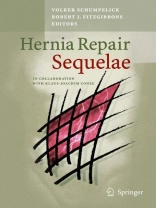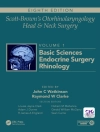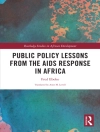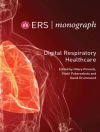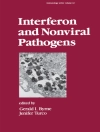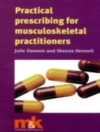Even the best hernia repair can result in postoperative difficulties for the patient caused by repair sequelae as for example pain, infertility, infection, adhesion and dislocation of the protheses. That can happen many years later and now, where the general principle of hernia repair is well understood all over the world, these sequelae are noticed more and more. To define them, to evaluate the absolute and relative risk of these sequelaes and to describe the ways of their prevention, diagnosis and treatment, the 5th Suvretta meeting had focussed on this subject. We discussed if there’s a principle risk by technique, material or both. The results of these discussions and the future handling and evaluation of this problem was the aim of this meeting. Even the best method can be made better by optimization of its single components.
Even the best hernia repair can result in postoperative difficulties for the patient caused by repair sequelae such as pain, infertility, infection, adhesion and dislocation of the prostheses. This can happen many years later, and now that the general principle of hernia repair is broadly understood all over the world, these sequelae are being noticed more and more. The 5th Suvretta meeting was held in order to define these sequelae, to evaluate the absolute and relative risks they pose, and to discuss the methods of their prevention, diagnosis and treatment. We discussed whether the principal risk was related to technique, material or both. This discussion and the future approach to and evaluation of this problem were the aims of the meeting, working on the premise that even the best method can be made better by optimizing its individual components.
Jadual kandungan
Risk for the Spermatic Cord.- Are There Adverse Effects of Herniorrhaphy Techniques on Testicular Perfusion?.- The effects of Mesh Bioprosthesis on the Spermatic Cord Structures in a Rat Model.- Damage to the Spermatic Cord by the Lichtenstein Procedure in a Pig Model-Preliminary Results.- Influence of Prosthetic Implants on Male Fertility in Rabbits and Rats.- The Effects of a Mesh Bioprosthesis on the Spermatic Cord Structures.- Influence of Prosthetic Implants on Male Fertility in Rats.- What Can We Do To Decrease the Risk of Vas Deferens Injury due to Inguinal Hernioplasty?.- The Long-Term Effect on Testicular Function of a Mesh Bioprosthesis Used for Inguinal Hernia Repair.- Reoperation Following Lichtenstein Repair: What Do Vas and Nerves Look Like?.- Damage to the Spermatic Cord from Groin Herniorrhaphy: A Review.- Risk for Infection.- Mesh Infection Following Hernia Repair: A Frequent Problem?.- Patient Factors as a Major Determinant of Wound Outcome and Infection After Surgery.- Mesh-Related Infections After Hernia Repair.- Human Acellular Dermal Matrix for Ventral Hernia Repair in the Compromised Surgical Field.- Fate of the Inguinal Hernia Following Removal of Infected Prosthetic Mesh.- Mesh Infection-Therapeutic Options.- Does Antibiotic Prophylaxis Prevent the Occurrence of Wound Infection After Groin Hernia Surgery?.- Infection Control in a Hernia Clinic: 24-Year Results of Aseptic and Antiseptic Measure Implementation in 4, 620 “Clean Cases” Based on Up-To-Date Microbiological Research.- Components Separation Technique: Pros and Cons.- Risk for Pain.- Self-Assessment of Discomfort and Pain after Inguinal Hernia Repair: A Reflection of Both Individual Pain Propensity and Surgical Strategy.- Chronic Pain After Inguinal Hernia Repair.- What Do We Know About the Pathophysiology and Pathology of Neuropathic Pain?.- Surgical Trauma of Nerves-Causes of Neuropathic Pain, Classification, and Options in Surgical Therapy.- Risks for Pain-Neuropathic Pain: How Should We Handle the Nerves?.- What To Consider as Clinicians About Chronic Postoperative Pain and Inguinal Herniorrhaphy.- Risk Factors for Chronic Pain After Groin Hernia Surgery.- Ischemic Inflammatory Response Syndrome as an Alternative Explanation for Postherniorrhaphy Pain.- Postoperative CRPS in Inguinal Hernia Patients.- Chronic Pain After Open Mesh Repair of Incisional Hernia.- Clinical Results After Open Mesh Repair.- Acute and Chronic Pain After Laparoscopic Incisional Hernia Repair.- Effect of Nerve Identification on the Rate of Postoperative Chronic Pain Following Inguinal Hernia Surgery.- Discomfort 5 Years After Laparoscopic and Shouldice Inguinal Hernia Repair: A Report from the SMIL Study Group.- Recurrence or Complication: The Lesser of Two Evils? A Review of Patient-Reported Outcomes from the VA Hernia Trial.- Chronic Pain After Inguinal Hernia Repair: The Choice of Prosthesis Outweighs That of Technique.- The Effect of Polypropylene Mesh on the Ilioinguinal Nerve in Open Mesh Repair of Groin Hernia.- Lightweight Macroporous Mesh vs. Standard Polypropylene Mesh in Lichtenstein Hernioplasty.- Does the Choice of Prosthetic Mesh Type Make a Difference in Postherniorrhaphy Groin Pain?.- New Understanding of the Causes and Surgical Treatment of Postherniorrhaphy Inguinodynia and Orchialgia.- Surgery for Chronic Inguinal Pain: Neurectomy, Mesh Explantation, or Both?.- Results of Tailored Therapy for Patients with Chronic Inguinal Pain.- Risk for Adhesion.- Adhesion as a Chronic Inflammatory Problem? Risk for Adhesions, Migration, and Erosions?.- Biological Tissue Graft: Present Status.- IPOM Results of 344 Consecutive Patients with a PVDF-Derived Prosthesis.- Pooled Data Analysis of Laparoscopic vs. Open Ventral Hernia Repair: 14 Years of Patient Data Accrual.- Tissue Ingrowth, Adhesion, and Mesh Contraction.- Effect of Different Mesh Materials on Adhesion Formation.- Tissue Ingrowth and Laparoscopic Ventral Hernia Mesh Materials: An Updated Review of the Literature.- Porosity and Adhesion in an IPOM Model.- Benefit of Lightweight and/or Titanium Meshes?.- e PTFE Prostheses and Modifications.- The Role of Stem Cells in Abdominal Wall Repair.- Risk for Migration and Erosion.- Safety and Durability of Prosthetic Repair of the Hiatal Hernia: Lessons Learned from a 15-Year Experience.- Mesh Migration into the Esophageal Wall After Mesh Hiatoplasty.- Complications After Gastric Banding-Results in Germany.- Alloplastic Implants for the Treatment of Stress Urinary Incontinence and Pelvic Organ Prolapse.- Prophylactic IPOM Mesh To Prevent Parastomal Hernias.- Laparoscopic Parastomal Hernia Repair: Pitfalls and Complications.- Concept of Visible Mesh and Possibilities for Analysis of Mesh Migration and Shrinkage.- Strategy to Improve Results.- Who Has the Major Role in Hernia Surgery: The Surgeon or the Material?.- Pro and Contra.- Two Controversial Concepts: Standard Procedure in a Standard Patient Versus Tailored Surgery with Procedures Adjusted to Individual Patients.- Pro and Contra.- In Support of a Standard Technique for Inguinal Hernia Repair.- In Support of Individual Selection of Technique as Related to the Patient-Improvement by Better Selection of Patients Who Can Be Offered a Less Risky Technique: Groin Hernia.- In Support of Standard Procedure in Abdominal Hernia Repair.- In Support of Individualized Procedures in Abdominal Wall Hernia Repair.- In Support of Standard Procedure in Hiatal Hernia Repair.- Strategy To Improve the Results? In Support of Individualized Procedures in Hiatal Hernia Repair.- Questionnaire.
